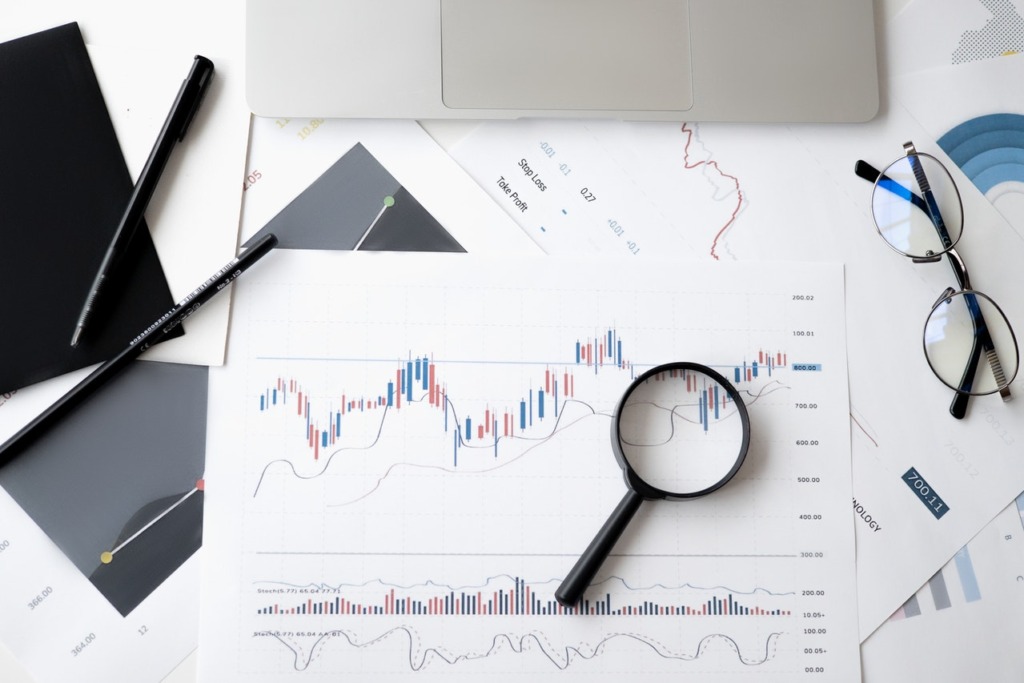

Most traders don’t have a finance or economics degree. Out of 7.8 million new retail clients just at the beginning of the pandemic, only a tiny fraction of them had experience in the field.
So, traders tend to miss important distinctions about certain trading terms. Most likely, leading universities would teach you the difference. But that would cost you $40,000-$50,000 in yearly tuition fees for degrees like Financial Analysis and Financial Economics. A more affordable alternative: learning about these topics online. Not as comprehensive, but certainly more accessible.
The common perception is that the terms “strategy” and “trade system” both refer to a set of rules and parameters that govern your trading decision. That said, they have a different scope and focus. Read on for a crash course in trading strategies and trade systems.
What is a trading strategy?
A trading strategy is a set of rules that formulate specifications for each trade: what to trade, when to enter and exit positions, how much capital to allocate per trade, etc. In the most simple terms, a strategy tells the trader what, when, and how to trade.
A strategy acts like a blueprint, which leaves no room for ambiguity or any unplanned moves. You don’t have to formulate buy and sell signals each time, which minimizes the chance of making emotion-driven moves.
Each strategy has a core idea; for example:
- A trend-following strategy is based on the expectation that the price direction will continue.
- A trend-fading strategy involves taking an opposite position from the prevailing trend.
- A breakout strategy captures breakouts of support and resistance levels.
- A scalping strategy involves opening a position and closing it after it moves by just a few ticks.
The level of detail and amount of guidance in a trading strategy depends on the trader and their style. For example, swing traders or day traders follow lengthy, detailed trading strategies.
Here are a few questions that can help you figure out your strategy:
- What indicators will you use? What combinations?
- What are your setups and trigger points?
- How will you exit trades?
- What are your stop-loss and take-profit levels?
What is a trading system?
A trading system is a broader roadmap. It doesn’t describe specific parameters for positions like strategies; it sets a framework for everything related to your trading activity. In fact, some even consider strategies as part of a trading system.

Here are the main components that constitute a trading system and questions you should ask yourself regarding each of them.
- Objective
- Why do you want to trade?
- How will you measure your goals?
- What is your timeline for achieving these goals?
- How much time can you spend trading?
- What are your strengths and weaknesses, and how can they affect your trading?
- Methodology
- What assets will you be trading?
- What is your level of trading experience?
- What type of trader do you want to be?
- How much equity do you want to use?
- Risk Management
- What is your risk/reward ratio?
- How much will you risk per trade? Low: 1%-2%, medium: 2%-5%, high: 5%-20% , or reckless: over 20%?
- How many open positions will you have at any one time?
- Trader Log
- What are your returns/losses for the day, month, and year?
- What is your average time per trade?
- Which trade setup has better efficiency?
- What factors affect the outcome of the trade?
Differences in building a strategy vs. building a system
Here are three key differences:
Flexibility
Your trading system is usually unchanging, but a strategy is subject to reevaluation and should be adjusted to fit new market conditions. Because a system is built around your personality and preference, it doesn’t need to be changed unless your overall approach to trading takes a 180° turn. Strategies, on the other hand, are built around particular setups, which can change quite frequently.
Level of detail
Compared to trading systems or plans, strategies are more technical and meticulous. With strategies, there are more if/then statements to write down and more outcomes to prepare for.
Time commitment
Throughout your trading journey, you’ll spend most of your time working on your strategies. Building a system and making trades can be done relatively quickly.

Why you need both a trading strategy and a trade system
If you ask anyone who trades consistently and successfully, they will assure you that you have two options: methodically follow a plan or fail.
Imagine that you don’t have a trading system. This puts you in a position of an amateur trader who enters the market without knowing what objectives they pursue and what level of risk they can afford. That makes any trader ill-equipped to make informed choices. You don’t even need a complicated system — just make sure you have one, even if it’s simple.
As for strategies, there are numerous reasons why they are crucial for long-term success:
- Strategies prepare you for many potential outcomes. You’ll instantly know what to do even if the market doesn’t move as you expected. Good strategies provide you with alternative options.
- They allow you to stay focused amid the huge inflow of data. Yes, you will still have to deal with lots of data regarding pricing characteristics and external factors. But you won’t need to follow everything, just the type of data your strategy is based on.
- They teach you a lot about how the market works. When you customize standard strategies or build your own, you familiarize yourself with important concepts, such as statistical bias, chart patterns, technical indicators, etc. You also learn how to spot appropriate and inappropriate times for trades.
- Your results become measurable. Chaotic trading leaves no room to measure results and improve performance. A strategy, on the other hand, has quantifiable parameters.
- It becomes easier to keep emotions at bay. A strategy doesn’t let you get swayed by a streak of good or bad trades. Both greed and fear can make you lose funds unless you purposefully set them aside in favor of your trading guidelines.
Conclusion
The main thing you should take away from this article is that you need a system and a strategy:
- The goal of a system is to put you in the right mindset, outline your general trading preferences, and set your personal account management and risk tolerance rules. Basically, it’s an overarching plan that doesn’t get into specifics.
- The goal of a strategy is to narrow down your technical and fundamental analysis tools, rules for entering and exiting trades, and other specific considerations that you need to keep in mind in every trading session.
It takes time and effort to build a system and a strategy (ideally, several strategies for different situations). But never skip this step — in trading, it’s better to come prepared and ready.
Disclaimer: No strategy can guarantee a 100% correct outcome of the trade.









